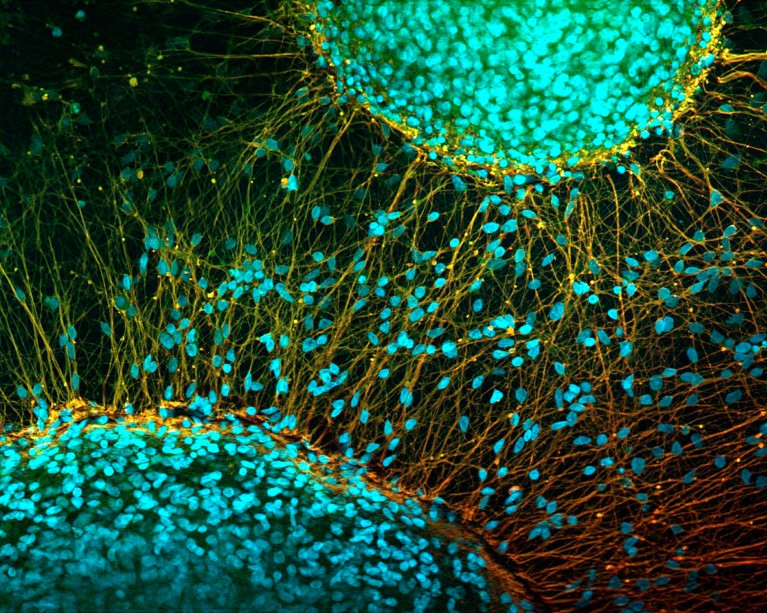
Nerve cells derived from induced pluripotent stem cells have the potential to reverse paralysis.Credit: IKELOS GmbH/Dr. Christopher B. Jackson/SPL
A paralysed man can stand on his own after receiving an injection of neural stem cells to treat his spinal cord injury. The Japanese man was one of four individuals in a first-of-its-kind trial that used reprogrammed stem cells to treat people who are paralysed.
Another man can now move his arms and legs following the treatment, but the two others did not show substantial improvements. The trial was run by Hideyuki Okano, a stem-cell scientist at Keio University in Tokyo, and his colleagues.
The results, which were announced at a press conference on 21 March and have not yet been peer reviewed, suggest that the treatment is safe, say researchers.
“That’s a great positive outcome. It’s very exciting for the field,” says James St John, a translational neuroscientist at Griffith University in the Gold Coast, Australia.
Previous trials using other types of stem cell have also demonstrated that the therapy is safe, but have so far shown mixed results. “Nothing’s really worked so far,” says St John.
Larger trials will be needed to establish whether the improvements observed in the two individuals in the current study were a result of the treatment. It’s possible the patients experienced a natural recovery, says St John.
In 2019, roughly 0.9 million people globally experienced a spinal cord injury, and some 20 million people were living with the condition1.
Reprogrammed cells
Reprogrammed or induced pluripotent stem (iPS) cells are created by reverting adult cells to an embryonic-like state, from which they can be coaxed to develop into other cell types.
In this trial, iPS cells derived from a donor were used to create neural precursor cells. Two million of these were injected into each patient’s injury site, in the hope that they would eventually develop into neurons and glial cells.
The trial’s first surgery was performed in December 2021; the other three were conducted between 2022 and 2023. All four recipients were adult males and two were aged 60 or older. They all had surgery between two and four weeks after the damage was done, says Okano. Recipients were given immune-suppressing drugs to prevent their bodies from attacking the cells for six months after the surgery.
The results are the latest in a series of small human trials testing the potential of iPS cells to regenerate tissue and treat disease.
Learning to walk
At the one-year follow-up, the researchers did not observe any serious adverse effects.
All individuals started the trial with the highest injury classification of A, as measured by the American Spinal Injury Association Impairment Scale (AIS). People with this level of impairment have no sensory or motor function below the point of injury. Two of the participants did not show improvements in their ability to feel or move in the lowest section of their spinal cord. One individual moved up to a classification of C in the period after surgery, and can move some of their arm and leg muscles but cannot stand on their own. Another individual improved to a level D (normal function is classified as E) and can stand independently. “That person is now training to walk,” says Okano. “This is a dramatic recovery.”
Preliminary analysis of the data suggests the treatment works, says Okano.
